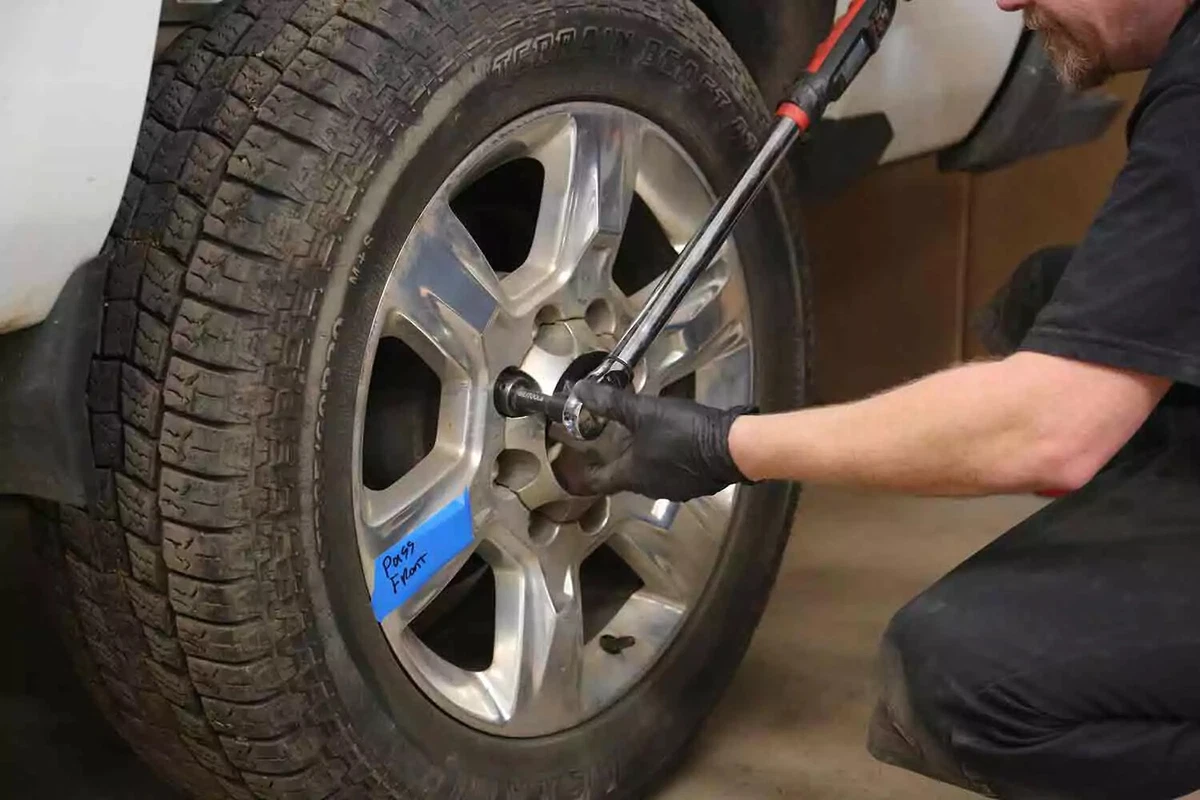If you’ve never rotated your tires, you might be missing important tools and other items. And when it comes time to do the job, you might find there’s preventative maintenance to address. That could also require a few new items in your DIY garage.
Check out our detailed
step-by-step guide to rotating your tires
- opens in new window or tab.
. And learn about
why should rotate your tires on a regular schedule
- opens in new window or tab.
.
Buying the Best Jack and Jack Stands

A jack and jack stands are an absolute must for rotating your tires.
To properly rotate your tires, you need a good jack and a set of jack stands. Safety is the top priority whenever you are working under your vehicle. High-quality tools to lift your car makes it much easier to rotate tires.
Floor jack
: A small bottle jack can fit inside the trunk of your car. There are also scissor, high-lift, and exhaust jacks. Regardless, a high-quality floor jack is extremely helpful addition to any garage. We recommend buying a
hydraulic floor jack
- opens in new window or tab.
, which comes in a variety of weight capacities and styles. They should be made of durable materials like steel or aluminum. Before buying, read this:
What You Need to Know About Vehicle Jacks
- opens in new window or tab.
Jack stands
: Steel jack stands are the most common and offer the best weight capacity as well as longevity. Get a higher quality set for about $50 or $60 a pair. Aluminum stands are also available, but they are only suitable for small vehicles and short-term use.
Wheel chocks
: Whenever you jack up your car, apply the emergency brake. While this is usually sufficient for keeping the car from rolling, wheel chocks provide added peace of mind. Wheel chocks slide behind or in front of the wheel to ensure that they don’t roll forward or backward when the car is lifted up. There are plenty of blocky items that work in a pinch, but it’s better have chocks that are made for the job.
Buy a Great Torque Wrench

An electronic torque wrench with a long handle makes rotating your tires a lot easier.
When you put the wheels back on your vehicle after a tire rotation, ensure that the lug nuts are tightened to the proper torque, as noted in your owner’s manual. You need a
torque wrench
- opens in new window or tab.
to hit the right torque specifications.
The most common type of torque wrench has a clicking mechanism. You set the amount of torque you need, and the wrench clicks when you reach the desired amount. A suitable torque wrench should be rated to at least as much torque as your lug nuts require.
Consider investing in an electronic torque wrench. They have a digital readout that tells you exactly how much torque is being applied. That’s a useful feature for a home mechanic.
Also, think about getting a torque wrench with a long handle. That provides the leverage needed to reach the right amount of torque with less manual effort.
More Tire Rotation Tools You Should Have

A digital tire-pressure gauge takes the guesswork out of determining PSI.
Tire pressure gauge
: While you are rotating your tires, it’s the perfect time to check their pressure. Don’t only go by the pressure that’s stated on the tire. To get the proper tire pressure, it’s best to look at the placard on the driver’s side door. That’s where the manufacturer lists the proper air pressure for tires and the right size. On most modern vehicles, it’s probably a number in the mid-30s range in psi. A good
tire pressure gauge,
- opens in new window or tab.
especially one with a digital readout, gives you an easy-to-read accurate reading.
TPMS relearn tool
: If your car has tire pressure sensors, you may need to reset them when you replace or rotate the tires. A
TPMS relearn tool
- opens in new window or tab.
syncs the sensors with the vehicle’s electronic control unit to ensure that the sensors work properly.
How to Find the Correct Wheels and Tires

Maybe rotating your tires isn’t enough. It could be time for a new set.
The next time you rotate your tires, you might find that your tires need to be replaced. See our blog post:
How Long Do Car Tires Last?
- opens in new window or tab.
On average, a tire lasts between 36,000 and 75,000 miles. That means you can get about three to five years from a high-quality all-season tire, assuming 12,000 to 15,000 miles of annual driving. Also, every tire has an expiration date, even when it’s not driven on regularly. Tires are expected to be used for only about six years from the day they are manufactured.
Getting a tire with the right size tire is easy. Use the
eBay Parts Finder
- opens in new window or tab.
. That’s where you can enter your vehicle’s year, make, model, engine, and trim and get a list of compatible components. Then, search for tires that match your vehicle’s specifications.
Share your feedback
This article is meant to provide general guidance only. Automotive maintenance, repair, upgrade, and installation may depend on vehicle-specifics such as make and model. Always consult your owner's manual, repair guide for specific information for your particular vehicle and consider a licensed auto-care professional's help as well, particularly for advance repairs.




